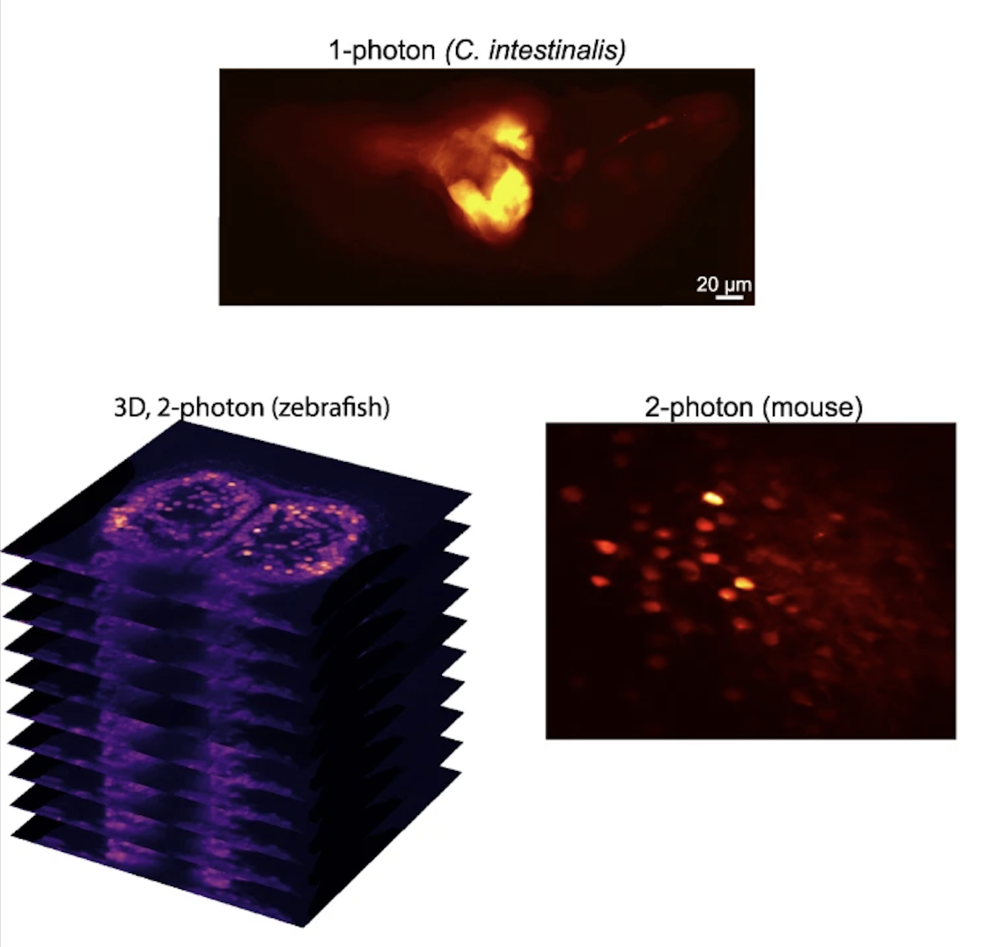Revolutionizing large scale calcium analysis
An adaptable and user-friendly platform for 2D and 3D calcium imaging data analysis reveals the basic organization of neuronal dynamics in a simple chordate brain.

Main content
An article published by Marios Chatzigeorgiou’s group in the journal Nature Communications reports a new platform for analysis of Calcium signalling dynamics. Calcium imaging is an extremely important technique for understanding many fundamental processes in living organisms. For example, calcium signalling is very important for encoding and transmitting information in our brain, while it is also an indispensable signalling pathway that coordinates many aspects of embryonic development.
The analysis of calcium imaging data has always been a very challenging task for various reasons including image processing, data organization, analysis, and accessibility. Mesmerize offers state-of-the-art solutions to these problems and promises to simplify the analysis of complex 2D and 3D (volumetric) calcium imaging datasets.
From a biological standpoint, the first and co-corresponding author Kushal Kolar performed the first ever, large-scale analysis of calcium dynamics in the protochordate Ciona intestinalis, which is an emerging model organism for systems neuroscience. His analysis provides the first clues into how neural circuits communicate in this simple nervous system composed of approximately 250 neurons.
I'm still applying the programming & quantitative skills which I am very grateful to have gained in Marios lab! Kushal Kolar
We interviewed first author, Kushal Kolar:
- Can you tell us more about your educational background and why you worked at the Sars Centre ?
I did my undergrad in Neurobiology & Biochemistry at the University of British Columbia in Vancouver, Canada. During my undergrad research I had worked a lot with behavior, circuits & systems neuroscience using mouse models. After graduating I was interested in evolutionary questions, I wanted to understand how these circuits & systems evolved in addition to understanding their function (which was much harder than I thought!). I heard about Marios while I was an intern at EMBL and Marios was looking for someone with a strong background in both programming and systems neuroscience. I found that Ciona is a pretty interesting animal since it's a very simple chordate, a sister group to vertebrates, and you can create transgenics to study neuronal dynamics using animals from the wild. I also thought that I would be able to handle rainy Bergen since I lived in Vancouver for 5 years, but I don't think anything can ever prepare you for the Norwegian winters.
- Why would you say this new paper is important in your current research field and what should be done after it ?
I'd say this paper is both important for the Ciona field and the calcium imaging analysis arena. Neuronal dynamics and circuits in Ciona are poorly understood, it is probably quite impractical to perform electrophysiological recordings due to their sticky tunic. Therefore calcium imaging was the way to go. Our paper looks at the calcium dynamics in a number of different genetically defined neuronal populations and we introduced new methods for analysis of calcium imaging data to quantitatively define 4 different cellular populations based on their calcium signature.
- What are you doing now?
I'm now a PhD student at UNC Chapel Hill, which is a really great place for systems neuroscience. I'm now back to using mouse models but I'm still applying the programming & quantitative skills which I am very grateful to have gained in Marios lab! I'm currently doing my rotations, but I'm sure that my thesis project will involve calcium imaging (or even voltage imaging) in some way and I will probably use Mesmerize, or a future derivative, as part of my analysis workflow. Mesmerize has also piqued interest in the local neuroscience community here. "The Research Triangle" of North Carolina consists of UNC, Duke, an NIH center, and a number of biotech companies which are all within 30 minutes of each other. The local NIH center has become one of the largest user bases for Mesmerize.
